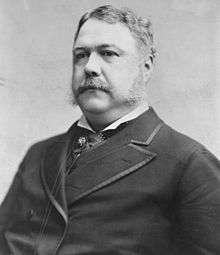Union College
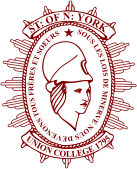 | |
| Motto | Sous les lois de Minerve nous devenons tous frères et sœurs (French) |
|---|---|
Motto in English | Under the laws of Minerva, we all become brothers and sisters |
| Type | Private liberal arts college |
| Established | February 25, 1795 |
| Endowment | $423.4 million (2017)[1] |
| President | David R. Harris |
Academic staff | 228[2] |
| Undergraduates | 2,242 (Fall 2014)[3] |
| Location | Schenectady, New York, United States |
| Campus | Urban: 120 acres, including 8 acres of formal gardens |
| Colors |
Union garnet[4] |
| Athletics |
NCAA Div I – ECAC Hockey Div III – Liberty League |
| Nickname | Dutchmen/Dutchwomen |
| Affiliations | |
| Website |
www |
Union College is a private, non-denominational liberal arts college located in Schenectady, New York. Founded in 1795, it was the first institution of higher learning chartered by the New York State Board of Regents. In the 19th century, it became the "Mother of Fraternities",[6] as three of the earliest such organizations were established there. After 175 years as a traditional all-male institution, Union College began enrolling women in 1970.
Regarded as among the Little Ivies,[7] the college offers a liberal arts curriculum across some 21 academic departments, as well as opportunities for interdepartmental majors and self-designed organizing theme majors. In common with most liberal arts colleges, Union offers a wide array of courses in arts, sciences, literature, and foreign languages, but, in common with only a few other liberal arts colleges, Union also offers ABET-accredited undergraduate degrees in computer engineering, bioengineering, electrical engineering, and mechanical engineering. Approximately 25% of students major in the social sciences; 10% in psychology; 11% in engineering; 10% in biology; 9% in history; and 10% in the humanities; while some 5% design their own majors. By the time they graduate, about 60% of Union students will have engaged in some form of international study or study abroad.[8]
History
Founding
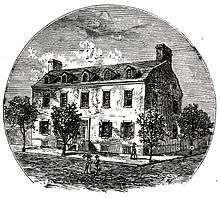
Officially chartered in 1795,[9] Union is the first non-denominational institution of higher education in the United States, and second college established in the State of New York.
During the sweeping span of 1636-1769 only nine institutions of higher education managed to set permanent roots in Colonial America.[a] All had been founded in association with Anglo religious denominations devoted to the perpetuation of traditional forms of religious culture.[10] Just Columbia University, birthed as King's College in 1754,[11] had preceded Union in New York.
Twenty-five years later impetus for another school grew. Certain that General John Burgoyne's defeat at the Battle of Saratoga in 1777 would mean a new nation, nearly 1,000 citizens of northern New York (which then included what eventually became Vermont) began the first popular demand for higher education in America.[12] As a democratic tide rose and began to overtake the people[13] old ways, in particular the old purposes and structure of higher education, were being pushed aside.[14]
Schenectady, a city founded and dominated by the Dutch of some 4,000 residents,[15] was after Albany and New York City the third largest in the state. The Dutch Reformed Church, progressive-thinking in comparison to the new nation's dominant Anglo denominations, began to show an interest in establishing an academy or college under its control there. In 1778, the Schenectady Dutch Reformed Church invited the Rev. Dirck Romeyn of New Jersey to visit.[16] Returning home, he authored a plan in 1782 for such an institution, and was summoned two years later[17] to finally come help found it.
The Schenectady Academy was established in 1785 as the city's first organized school.[18] It immediately flourished, reaching an enrollment of about 100 within a year. By at least 1792 it offered a full four-year college course, as well as one of elementary and practical subjects taught mainly to girls.[19] Attempts to charter the Academy as a college with the Board of Regents of the University of the State of New York in 1786, 1792, and 1793 were rejected[15] on the grounds the school was not yet either academically nor financially qualified.[20]
The following year the school reapplied, as "Union College", a name chosen to reflect the spirit of the thirteen religious sects which had gathered to foster it, which together resolved the school should be free of any specific religious affiliation.[21] The result was the first non-denominational institution of higher education in the United States, awarded its charter on February 25, 1795 – still celebrated by the College as "Founders' Day".[22]
Seals and mottos

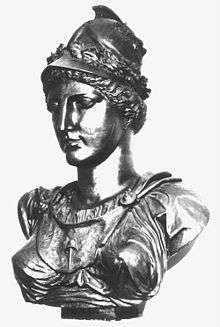
The College's charter provided for the design of an official seal to be used on diplomas and other official business documents and correspondence. The Trustees were also authorized to select the "devices and inscription" to be engraved on the seal.[23] A committee of four Trustees was appointed to look into the matter, and a seal was approved in November 1796. The original seal and its press have been lost, but it is known that it was nearly identical to the seal in use today (from an impression on a document from 1796).[24]
The Union College seal combines ancient and modern elements in balanced proportions. The head of the Roman goddess Minerva (Greek goddess Athena) appears in the center of an oval with an outside star pattern surrounding the whole. Around the central figure are the French words "Sous les lois de Minerve nous devenons tous frères et sœurs" (English: Under the laws of Minerva, we all become brothers and sisters).[25] Originally, the motto ended with the French word "frères" (English: brothers), but in 2015 the College modified the motto to add the French words "et sœurs" (English: and sisters).[26] On a banner just above the central figure are the words "St: of N: York" and on a similar banner below the central figure appear the words: "Union College 1795". The precise origins of the motto and the choice of Minerva as the fundamental element of the College seal are obscure, but two things are certain: like most colleges of the time, Union was deeply rooted in the classical tradition, but, unlike most colleges, Union chose a modern language rather than Latin for its motto. The resulting tone of the entire seal is thus historically aware, but distinctly modern in outlook.[27]
It is not at all surprising that the original trustees should have chosen Minerva as their herald and representative. Minerva began her mythological career as a local Italian deity (Etruscan, but possibly with Greek influences), patroness of the arts and crafts.[28] By the time she was well established as a Roman goddess, the scope of her interests and patronage had broadened to include at least painting, poetry, drama, and teaching. Somewhat paradoxically, Minerva was also associated with the arts of war—hence her image is usually that of a female dressed for battle.[29] Very early, Minerva was identified with the Greek goddess Athena, and invested with many of that deity's characteristics and iconography.[30] Eventually—certainly by the 18th century—Minerva had come to represent all of those qualities that might be wished for in a rational, virtuous, prudent, wise, and "scientific" man: just the sort of progressive individual who might found a new nation (or college) based on sound republican principles and liberal Christian (Protestant) morals.[31] When the Paris Academy of Sciences met for the first time in 1666, a commemorative medal was struck portraying Minerva on its reverse, surrounded by symbols of astronomy, anatomy, and chemistry.[32] The American Academy of Arts and Sciences, founded in 1780, took Minerva as its model, along with the motto "Sub libertate florent", intending to imply that the arts and sciences flourish best in a free society.[33] Clearly, Minerva was very much an icon of the Scientific Revolution and the Enlightenment.
While the rationale behind the connection between Union College and Minerva is relatively clear, there is less agreement with respect to the history of the College's motto.[27] Its egalitarian theme is consistent with the non-denominational and generally democratic spirit of Union's founding. It also declares the brotherhood of man, or of the community of mankind, in a sense familiar to the Enlightenment (and, of course, to the French revolutionaries). But that it does so with the qualification "under the laws of Minerva" is important.[34] Even though Minerva was a pagan goddess, and the Union College founders devout Protestants, there was still plenty of room for a belief that men could come together as brothers in a community ruled by reason, virtue, and natural law (or, as the case may be, the Law of God). The Latin motto on the seal of Union University supports this argument: In necessariis unitas, in dubiis libertas, in omnibus caritas (English: Unity in necessary matters, freedom in doubtful matters, charity for all). An institution of higher learning fosters unity of purpose (hence "brotherhood"), but not always unity of opinion, hence the freedom to disagree. The "laws of Minerva" enjoin rational thought rather than obligatory doctrine. Not surprisingly, the founders believed that the key to achieving this ideal state is education. Nearly all of the differences among human beings, wherever they may be found, argued John Locke, are the result of diverse education.[35] The founders of Union College were unabashedly optimistic that education, learning, and science could build a better world.
Presidents

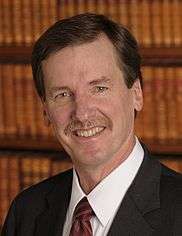
Union College has had nineteen presidents since its founding in 1795. Union has the distinction of having had the longest serving college or university president in the history of the United States, Eliphalet Nott.[36][37]
- John Blair Smith (1795–1799)[38]
- Jonathan Edwards, Jr. (1799–1801)[39]
- Jonathan Maxcy (1802–1804)[40]
- Eliphalet Nott (1804–1866)[41]
- Laurens Perseus Hickok (1866–1868)[42]
- Charles Augustus Aiken (1869–1871)[43]
- Eliphalet Nott Potter (1871–1884)[44]
- Harrison Edwin Webster (1888–1894)[45]
- Andrew Van Vranken Raymond (1894–1907)[46][47]
- Charles Alexander Richmond (1909–1928)[48]
- Frank Parker Day (1929–1933)[49]
- Dixon Ryan Fox (1934–1945)[50]
- Carter Davidson (1946–1965)[51]
- Harold Clark Martin (1965–1974)[52]
- Thomas Neville Bonner (1974–1978)[53]
- John Selwyn Morris (1979–1990)[54]
- Roger H. Hull (1990–2005)[55] [Interim: James Underwood (educator) (2005–2006)[56]]
- Stephen Ainlay (2006–2018)[57]
- David R. Harris (2018–present)[58]
Development of the curriculum
During the first half of the 19th century, students in American colleges would have encountered a very similar course of study, a curriculum with sturdy foundations in the traditional liberal arts (the trivium and quadrivium of ancient lineage).[59] This meant that the study of language and literature was largely based on Greek and Latin authorities, with Hebrew required less often. Arithmetic, geometry, and calculus ("fluxions") gave some practical application in navigation and surveying. Astronomy, chemistry, and natural philosophy (physics) rounded out the study of science. Finally, theology and moral philosophy as capstone subjects typically dominated much of the junior and senior years. Electives were essentially unheard of.[60] But by the 1820s all of this began to change.[61]
To begin with, although Latin and Greek remained a part of the curriculum (and do so to this day), new subjects were adopted that offered more readily apparent application to the busy commercial life of the new nation. Accordingly, French was gradually introduced into the college curriculum, sometimes as a substitute for Greek or Hebrew.[62] It is significant in this context that French was chosen for the Union College motto. By the second decade of the 19th century, calls for reform in higher education, especially in the traditional liberal arts colleges, were becoming increasingly demanding; a response was required if many of these institutions were to survive at all. The classical curriculum somehow needed to accommodate the needs of a practical, utilitarian, and egalitarian nation as it confronted its manifest destiny to conquer not only geography but nature itself. One solution to this problem was the so-called "parallel course of study" in scientific and "literary" subjects.[63] The basic idea was to offer a scientific curriculum in parallel to the classical curriculum, for those students wishing a more modern treatment of modern languages, mathematics, and science, equal in dignity to the traditional course of study.[64] An early attempt to establish such a parallel scientific course was made by Hobart College in Geneva, New York, when it was founded in 1825, so that at least some students could get on with the "practical business of life…without passing through a tedious course of classical studies."[65] But this experiment at Hobart soon languished, partly for lack of support by President Jasper Adams[66] and partly for lack of funds.[67] A similar experiment launched by Union College in 1828 was to fare much better.
It was the Hudson Valley that gave birth to – and nurtured – the first successful attempts in America to raise applied science and technology to a collegiate level. The first technical college in the United States, the military academy at West Point, was created by Congress in 1802.[68] The institution that eventually became Rensselaer Polytechnic Institute (RPI) was founded in Troy, New York, in 1824 and incorporated in 1826 (and of which Union College president Eliphalet Nott was also president from 1829 to 1845).[69] Union College introduced a parallel scientific curriculum in 1828 and a civil engineering program in 1845.[70] Union College, it has been said, was the "one traditional liberal arts college in the first half of the nineteenth century to make a thoroughly uncompromising and effective place for applied science in the course of study".[71] In fact, so successful were Union's reform efforts that by 1839 the College had one of the largest faculty in American higher education and an enrollment surpassed only by Yale.[72]
Campus
Architecture and design
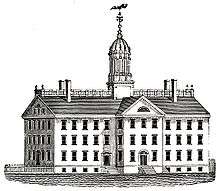
After Union College received its charter in 1795, it was quite natural that the College should carry on business in the same building already occupied by the Schenectady Academy. The College began conducting classes on the upper floor, while a grammar school continued to be conducted on the lower floor.[73] It soon became clear that this space would prove inadequate for the growing college (or at least for the optimistic plans of the founders). In 1796, the state of New York appropriated $10,000 (roughly $144 thousand today) for a new building, and construction began two years later on the edge of the original Schenectady town site.[74] The ground plan of the new buildings was to be 150 by 60 feet (46 by 18 m), the superstructure rising three stories, topped by a cupola.[75] There is reason to believe that the design of the building was influenced by that of Princeton's Nassau Hall (sometimes described as the Italianate style).[76] The new building was occupied in 1804, despite continuing financial difficulties, and two dormitories were constructed nearby.
However, Eliphalet Nott, arriving as president of the College in 1804 (having been a trustee since 1800) was not daunted by the obstacles to growth and expansion created by lack of funds, a reluctant legislature, and a sometimes litigious Board of Trustees. Even as the booming city of Schenectady was alive with commercial activity,[77] Nott was envisioning a college that would to a large extent protect and shield its students from the lowlife and temptations that inevitably accompanied rapid economic growth on the frontier. He also had no doubt that the size of the College would begin to steadily increase to meet the needs of a new national population.[78] But the only way for this to happen was through increased financial support from the State of New York, and Nott began the first of many complicated negotiations to endow the College with funds yielded by an education lottery, the first of which was authorized on March 30, 1805.[79][80]
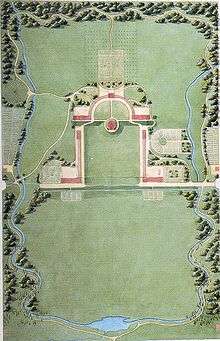
Accordingly, in July 1806, Nott and the trustees determined to acquire a large tract of land to the east of the Downtown Schenectady, on a gentle slope up from the Mohawk River and facing nearly due west. This tract was not promisingly described by Nott some years later as "pasture grounds, scarred by deep ravines, rendered at once unsightly and difficult of access by an alternation of swamp and sand hill …".[81] Clearly, the prospect was largely in the eye of the beholder. There was apparently even a sulphur spring on the hill,[82] although it did not pose any threat to Saratoga Springs. Using primarily his own funds and credit, Nott purchased between 250 and 300 acres (100 and 120 ha) of the hill.[83][84] By 1812 a stone wall had been built at the lower end of the slope, creating a terrace upon which the preliminary foundations for buildings were begun. Then a meeting occurred that changed not only the Union College campus, but many other American college designs for the next several decades.[85] The catalyst for this venture was international financier David Parish.[86]
The French landscape and building architect, Joseph Jacques Ramée had already established a reputation as a skilled designer of landscapes combined with houses and other kinds of buildings by the time he was persuaded to visit America in search of projects. One of his projects had been the design of the estate of David Parish's father in Hamburg, and Parish remembered this when he sought an architect to help him develop settlements on vast tracts of land in northern New York he had purchased on speculation.[87] Ramée arrived in the northern Adirondacks in late 1812 to work on projects in and around the small towns on Parish's land. But not even the ambitious Parish could keep the famous architect busy enough to support his family, so Parish also acted as agent in finding Ramée other work.[88][89] So, it was natural that on a return trip to Philadelphia in January 1813, Parish should introduce Ramée to Eliphalet Nott, who was already in the college building business. Nott hired Ramée almost immediately to draw up plans for the new campus, for the fairly grand sum of $1,500 (roughly $19,000 today).[89] Ramée worked on the drawings for about a year,[85] and construction of two of the college buildings proceeded quickly enough to permit occupation in 1814.[86] The Union College campus thus became the first comprehensively planned college campus in the United States.[90]
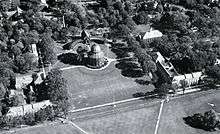
While it would be many years before nearly all of the elements of Ramée's original design were actually constructed, the plan itself, so to speak, broke new ground in college campus planning. On the terrace already prepared, the buildings were to be arranged to form a large, open courtyard, facing the West and the Mohawk River valley. The parallel buildings were 600 feet (180 m) apart and were all to be linked by arcades, one of which formed a semicircle at the upper end of the courtyard. In the center of the space a rotunda was planned, probably meant to be the College chapel. It has been said that "Ramée's Union College plan is important for introducing a new type of planning, involving many buildings related in complex ways to each other and to the surrounding landscape. It is also a milestone in the history of the American college campus. The most ambitious and comprehensive plan for a campus up to that time, the Union design became a model for collegiate planning."[90] It seems very likely, for example, that Thomas Jefferson was aware of the Ramée design for Union, either directly or through the influence of Benjamin Latrobe.[91][92] Certainly the final design at the University of Virginia is reminiscent of Ramée's overall conception in many ways. Indeed, the plan that Nott and Ramée imagined and realized in Schenectady eventually found its way into the design of other colleges and universities throughout the country.[89][93][94][95]
Landmarks
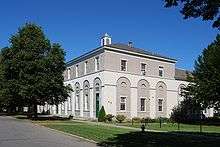

Arts Building: The Arts building is located at the east end of the Taylor Music Center (the former North Colonnade) and was an element of the original campus plan by Joseph Jacques Ramée. Built in 1852 and dedicated as Philosophical Hall, it housed the "natural philosophy" departments of today's physics and chemistry. Site of the first analytical chemistry laboratory in the nation, it remained home to the physics department remained for over 100 years, midway in which it was renamed the Physics building.[96]
Grant Hall: The former Alpha Delta Phi House was built for the fraternity between 1895 and 1898. It is the oldest surviving structure on campus originally constructed as a fraternity house and still has the Alpha Delta Phi crest on the front face of the building. Its architect, Albert W. Fuller, also designed several other buildings on campus. After the fraternity's lease on the land expired, the building was completely renovated by the College, and it reopened in the summer of 2001 as the Grant Admissions Center.[97]
Hale House: Often still called South Colonnade, this building was constructed in 1815 following the general design for the campus laid out by Ramée. It originally contained recitation rooms and laboratories as well as faculty apartments. A gift from Walter C. Baker (class of 1915) and his wife allowed the building to be converted into a much-needed College dining hall with faculty and student lounges in 1935–1936. It was named in honor of Professor Edward Everett Hale, who had once lived in part of the building. It is currently used as a dining hall and meeting space for special events.[98]
Jackson's Garden: Begun in the 1830s by Professor Isaac Jackson of the Mathematics Department, Jackson's Garden comprises 8 acres (3.2 ha) of formal gardens and woodlands. Sited where Ramee's original plans called for a garden, it initially featured a mix of vegetables, shrubs, and flowers – some of which were grown from seeds sent by botanists and botanical enthusiasts from around the world. As early as 1844 it drew the admiration of esteemed visitors such as John James Audubon, and evolved into a sweeping retreat for both students and faculty.[99]
Lippman Hall: Opened in 1967 as the Social Sciences building, today's Lippman Hall serves as one of the cornerstones of the liberal arts tradition at Union. Housing faculty offices and classrooms, the building is one of the most heavily used on campus. A lead gift in 2009 from Jim Lippman (1979) supported a major renovation.[100]
Memorial Chapel: Memorial Chapel was constructed between 1924 and 1925 to serve as the central College chapel and to honor Union graduates who lost their lives serving during wartime. The names of Union alumni who died in World War I and World War II appear on its south wall, flanked by portraits of College presidents.[101]
North and South College: The first College buildings using Ramée's plans, the pair were started in 1812 and occupied in 1814. Serving as dormitories, both buildings included faculty residences at each end until well into the 20th century.[102]
Nott Memorial: Designed by Edward Tuckerman Potter (class of 1853), this building derived from the central rotunda in the original Ramée Plan. While it was probably intended to be a chapel in its original conception, the Nott Memorial's primary purpose when finally built was aesthetic. It served as the library until 1961 when Schaffer Library was built. Its design bears some resemblance to the Radcliffe Camera at Oxford University. The building was added to the National Register of Historic Places in 1972[103] and designated a National Historic Landmark in 1986.[104] After many years of neglect, the building was restored to its original glory between 1993 and 1995 and today is the centerpiece of the campus.[105]
Old Chapel: The building now generally known as Old Chapel is located at the east end of South Colonnade / Hale House and was an element of the original campus plan by Ramée. It was built between 1855 and 1856 according to plans developed by College President Eliphalet Nott and Treasurer Jonathan Pearson (class of 1835) in consultation with Albany architect William L. Woolett. Better known as Geological Hall throughout its early years, it did indeed contain the College's primary chapel until 1925, although the chapel was not formally laid out with its balconies and wood paneling until the 1870s.[106]
Reamer Campus Center: Built in 1910 as the General Engineering Building with funds provided in part by Andrew Carnegie, this building was home to the Civil Engineering Department and a variety of other academic departments until the 1970s. It was designed by Albert W. Fuller, the architect of a number of other buildings on campus. After 1971 it served as a student activity center, but it was not until a major reconstruction and expansion project in 1985 that it became a true College Center with numerous dining and lounge spaces, an outdoor plaza, an auditorium, meeting rooms, and offices for student-related services and organizations.[107]
Schaffer Library: Schaffer Library, erected in 1961, was the first building constructed at Union for the sole purpose of housing the College library. Trustee Henry Schaffer donated the majority of funds needed for its construction as well as for a later expansion between 1973 and 1974. The original building was designed by Walker O. Cain of McKim, Mead and White and built by the Hamilton Construction Company. Additional interior work supported by the Schaffer Foundation was done in the 1980s. After structural problems with the 1973–1974 addition developed, a major project to renovate and expand the library was undertaken in the late 1990s. Designed by the firm of Perry, Dean, Rogers and Partners, the renovation provided space for College Media Services, Writing Center, and a language lab.[108]
Webster House: Webster House was built between 1901 and 1903 to house the Schenectady Public Library on land that purchased from the College. Its construction was financed in part by Andrew Carnegie, making it one of over 2,500 Carnegie Libraries throughout the world, including Union's own College library at the time. General Electric also contributed funds towards its construction. Union repurchased the building and land in 1970 after the public library moved to a larger facility in the city. For several years the space was used for student and other organizations. It was renovated into a dormitory in 1973 and named for College President Harrison Webster (class of 1868 and President 1884–1894).[109]
Organization and Administration
Board of Trustees
"The Trustees of Union College", as a corporate body, has owned the College and been the College's designated legal representative throughout its history.[110] The Board consists of four life trustees, twenty-one term trustees, four alumni trustees, two faculty trustees, two student trustees, and the president of the College. The governor of the state of New York is also an ex officio member. The Board meets three times annually: in February, May, and October. The Board appoints the president of the College upon vacancy of the position.[111]
Administration and faculty
The active administration of Union College consists of the president; vice-presidents for student affairs, college relations, academic affairs, administration and finance, and admissions, financial aid and Enrollment; Chief of Staff, Senior Director for Diversity and Affirmative Action and deans and directors of subsidiary departments, including the academic departments, interdisciplinary studies, engineering, advising, health professions, information technology services, athletics, and the library.[112]
The general faculty includes all full-time members of the teaching faculty, professional librarians, and part-time faculty teaching at least four courses during the academic year. Leadership of the general faculty is assigned to a Faculty Executive Committee (FEC), consisting of a chair, a secretary, and four additional faculty members elected by each of the four academic divisions (humanities, social sciences, sciences and mathematics, and engineering).[113]
The Student Forum
The Student Forum represents the principal form of student government at Union College. The purpose of the Student Forum is to consider issues and to review, recommend, or formulate policies (as appropriate) in areas involving the student body. In many ways, the structure of student government at Union College deliberately mirrors the structure of College government. The student body is represented by a president, vice-president of administration, vice-president of finance, vice-president of academics, vice-president of campus life, and vice-president for multicultural affairs. The entire Student Forum includes these officers together with two student trustees and 12 class representatives.[114]
Memberships and affiliations
Union College belongs to the Liberty League, ECAC Hockey, the Annapolis Group, the Oberlin Group, the Consortium of Liberal Arts Colleges (CLAC), and the New York Six Consortium.[115] Union is also a component of Union University, which includes the Union Graduate College, Albany Medical College, Albany Law School, the Dudley Observatory, and the Albany College of Pharmacy and Health Sciences.[116]
Student media
The Union College radio station, WRUC 89.7, dates from a student project in fall, 1910, but did not become "live" until 1912.[117] The Union College radio station was among the very first wireless transmitters in the country to broadcast regularly scheduled programs.[118] The weekly Concordiensis, the principal newspaper of Union College since 1877, is the thirteenth oldest student newspaper in the United States and the oldest continuously published newspaper in Schenectady.[119]
Academics
Academic program
The mission statement of Union College[120] claims, in part, that Union will offer a liberal education that includes "a wide range of disciplines and interdisciplinary programs in the liberal arts and engineering, as well as academic, athletic, cultural, and social activities, including opportunities to study abroad and to participate in undergraduate research and community service." The general education program and the requirements of the major are an essential component of this mission.[121] In addition to a standard distribution requirement of courses in several disciplines, the general education curriculum includes two specially designed, required courses intended to develop critical reading and writing skills across the first two years of college: the First-Year Preceptorial (FYP) and the Sophomore Research Seminar (SRS).
The mission of FYP is, "through reading, writing, and discussing important ideas from diverse perspectives, [to help] students develop an appreciation for the values embodied in the liberal arts. These include the habits and skills of critical inquiry, a tolerance for diverse points of view, an awareness of ambiguity, and a deep curiosity about the social, ethical, cultural, political, and natural world in which we live. All of this takes place in an environment that cultivates skills in analytical reading, clear and vigorous writing, and convincing argumentation."[122] The typical FYP relies on a significant reading load of traditional as well as modern texts, together with substantial classroom discussion and written analysis of ideas and authors.
The SRS, as a complementary course, is intended to focus on the learning of research methods, evidence-based reasoning, and the techniques of sound written argumentation.[123] The typical SRS concentrates on a particular conceptual or historical problem and culminates in a substantial research paper. Most SRS sections involve a professional librarian in cooperation with a teaching faculty member.
Most undergraduates are required to complete a minimum of 36 term courses in all programs except engineering, which may require up to 40 courses (in two-degree programs, nine courses beyond the requirements for the professional degrees) and students in the Leadership in Medicine program, which requires around 45-50 courses.[124]
Admissions
For the Class of 2018 (enrolling fall 2014), Union College received 5,406 applications and accepted 2,223 (41.1%), with 570 enrolling.[125] The mean SAT scores for the Class of 2018 were 630 for critical reading, 670 for math, and 630 for writing, while the middle 50% range of SAT scores was 590-680 for critical reading, 620-720 for math, and 590-670 for writing.[125] The mean ACT composite score was 29; the middle 50% range was 28-31.[125] The average high school grade point average (GPA) of enrolling freshmen was 3.41.[125]
Undergraduate research
Undergraduate research at Union College had its origin in the first third of the 20th century, when chemistry professor Charles Hurd began involving students in his colloid chemistry investigations. Since then, undergraduate research has taken hold in all disciplines at the College, making this endeavor what has been termed "the linchpin" of the Union education. By the mid-1960s several disciplines at Union had established a senior research thesis requirement, and in 1978 the College began funding faculty-mentored student research in all disciplines. This was followed by the creation of funded summer research opportunities, again in all disciplines at the College, in 1986. Examples of possible programs include summer undergraduate research, in which students are supported each summer by the College on independent projects with a sponsoring faculty member; the National Conference on Undergraduate Research, to which Union sends one of the largest contingents to its national conference each year where the students present their work and interact with peers from colleges and universities across the country; general internships at such nearby sites as General Electric's Global Research Center; and the Steinmetz Symposium day. On a Friday in May, over 300 students, previously carrying out research within the past year, present their research and projects to their fellow students, teachers, staff, and visitors. Students also have the school day off, and presentations take form in slideshows, performances, lectures, and many other creative forms.[126]
Study abroad programs
Union College makes available a variety of opportunities for formal study outside the United States, the most popular of which are the Terms Abroad Programs.[127] Currently, Terms Abroad are offered for residence and study on nearly every continent, some in cooperation with Hobart and William Smith Colleges. In the 2009–2010 school year, programs were offered in 22 countries or regions around the world.[128]
Every year Union College also offers a variety of mini-terms (three-week programs during the winter break or at the beginning of the summer vacation). In the 2009–2010 school year, mini-terms were offered in 11 regions or countries (including the United States).[129]
Every student in one of Union College's engineering programs is required to have an international experience prior to graduating from the College through some form of Terms Abroad, International Internships, International Design Projects, or a Mini-Term Abroad. Engineering Terms Abroad are currently offered in the Czech Republic, France, Germany, and Mexico.[130]
Schaffer Library
Schaffer Library opened in 1961, at which time the College library was moved from the Nott Memorial into expanded quarters as the keystone of the arched Ramée colonnade at the east end of the campus. The library currently makes available onsite about 750,000 books in print as well as electronic formats. The two largest historical, electronic collections are Early English Books Online (EEBO) and Eighteenth Century Collections Online (ECCO). EEBO contains digital facsimile pages of nearly every work printed in English from 1473 to 1700, while ECCO continues the project up to 1800. The Library's print and rare book collections are especially strong in 18th and 19th century literature, the Scientific Revolution, and the Enlightenment. Of particular note is the almost complete preservation of the College's first library, acquired between 1795 and 1799.[131]
Union College belongs to a number of regional and national consortia that improve access to materials not actually owned by the College. ConnectNY, for example, joins together a group of libraries in New York for mutual exchange of books and other materials within about 48 hours of request.[132]
Perhaps the most spectacular possession of the Special Collections Department is a full set of John James Audubon's Birds of America, purchased by Eliphalet Nott directly from Audubon in 1844.[133] The prints have been conserved and restored, and are on rotating display in the lobby of the library.
Student statistics and data
Some 59% of the student body is from outside New York. Union sees 80% of its undergraduates completing their degrees within four years, 85% doing so in five years, and 86% in six years. Noting the historical importance of Union with respect to fraternities, Union sees 32% of males joining fraternities and 31% of females joining sororities. The breakdown in the most popular majors shows that social sciences makes up 28%, engineering is 10%, English is 8%, psychology is 8%, biological/life sciences is 11%, liberal arts is 7%, and history is 6%.[134]
Rankings
| University rankings | |
|---|---|
| National | |
| Forbes[135] | 101 |
| Liberal arts colleges | |
| U.S. News & World Report[136] | 38 |
| Washington Monthly[137] | 48 |
Historically included among the Little Ivies,[7] Union is regarded as highly competitive academically and has a highly selective admissions process. It is a member of the Annapolis Group of Liberal Arts Colleges, which has issued several recent criticisms of the methodology and results of numerous popular attempts at comparative ranking of institutions of higher education.
Student life
Fraternity and sorority life
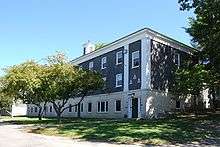
The modern fraternity system at American colleges and universities is generally determined as beginning with the founding at Union College of Kappa Alpha (1825), Sigma Phi (1827), and Delta Phi (1827). Three other surviving national fraternities – Psi Upsilon (1833), Chi Psi (1841), and Theta Delta Chi (1847) – were founded at Union in the next two decades; on account of this fecundity, Union would in the twentieth century call itself the 'Mother of Fraternities'.[6] As with most historical generalizations, this one requires qualification. What does seem true is that Union's claim to priority is that the oldest secret Greek letter social fraternity with a continuing record was founded at the College. None of the early societies at Union or elsewhere can precisely challenge the claim of Union's Sigma Phi, which became the first national fraternity with the founding of a second chapter at Hamilton College in 1831,[138] but the founders of the first fraternities at Union were obviously imitating or improving upon existing models. Miami University also refers to itself this way.[139]
The nine current fraternities at Union are members of the North-American Interfraternity Conference, and as such come under the supervision of the Interfraternity Council (IFC). They are: Alpha Delta Phi, Alpha Epsilon Pi, Chi Psi, Delta Kappa Epsilon, Kappa Alpha, Phi Gamma Delta, Sigma Chi, Sigma Phi, and Theta Delta Chi.[140] Among dormant fraternities with active alumni, Phi Sigma Kappa fraternity maintained a chapter on campus from 1888 to 1997.[141] The College Panhellenic Council (CPC) is the governing body for member sororities, of which the National Panhellenic Council (NPC) is the parent organization. There are four CPC sororities at Union: Delta Phi Epsilon, Gamma Phi Beta, Sigma Delta Tau, and Alpha Delta Lambda.[142] The Multicultural Greek Council (MGC) is the governing body for organizations under the supervision of the National Pan-Hellenic Council (NPHC), National Association of Latino Fraternal Organizations (NALFO), or for any local organizations that fall under the category. These organizations are Alpha Phi Alpha, Phi Iota Alpha, Iota Phi Theta, Lambda Pi Chi, and Omega Phi Beta.[143]
Minerva system
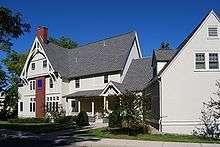
Before 2004, in an effort to provide an alternative social environment to that offered by the Greek organizations, the Union College administration began recovering occupancy of the independent fraternity houses. This initiative was, and remains, a controversial step by the College.[144] A non-residential "house system" was created and funded, establishing seven buildings (some part of North and South Colleges and some independent structures) as places to serve as intellectual, social, and cultural centers for resident as well as non-resident members. All incoming students are randomly assigned to one of the seven Minerva Houses. Every Minerva has its own student-run governing council, elected annually by their fellow house members, and chaired by a faculty and student representative. An Office of Minerva Programs was created to coordinate and supervise Minerva activities.[145] The seven Minerva Houses are Breazzano, Golub, Messa, Wold, Green, Beuth, Sorum.[145]
Theme houses
Theme houses at Union offer students who share a particular interest to live together in one of Union's apartment-style houses. All of the theme houses are intended to contribute socially or culturally to the Union community. The theme houses are advised by a member of Residential Life and all report to the Theme House Consortium, which oversees funding for programs and house projects. Each house is led by Theme House Managers, who represent their respective house on the Theme House Consortium. Overall, the theme houses are primarily self-governing with respect to leadership and housing placements.[146]
The Theme Houses consist of Arts House, Bronner House (with a theme of multiculturalism), Dickens House (with a theme of literature), Iris House (for the LGBTQ community) Ozone House (with a theme of sustainable living), Religious Diversity House, Rights House, Serenity House, The Symposium, Thurston House (with a theme based on East Asian interests), and Wells House (with a community service theme).[146]
Student safety
Campus Safety Department
The Union College Campus Safety Department, often referred to as "Campo" by the student body, is the organization authorized by the college to provide student safety and law enforcement services. The department's officers operate under Article 129A-§6435 of the New York State Education Laws, affording them limited law enforcement powers on campus[147] and the college boasts a relatively clean record for violent and sexual crimes on campus as a result.[148] Aside from serving as campus law enforcement, the Campus Safety Department also provides safety escort services to students and staff; administrates the colleges parking & transit programs, ID services and operates a Communications Center in their offices at College Park Hall. Campus Safety can be contacted from any campus phone by calling 911.[149]
Union College Emergency Medical Services (UCEMS)
Founded in 1996, UCEMS is a student run volunteer Basic Life Support First Response agency, recognized by the New York State Department of Health. Members must be state certified as emergency medical technicians (EMTs) either upon entering the organization or are placed into EMT-B classes. UCEMS is dispatched from the Campus Safety Communications Center and provides initial medical response to all medical emergencies on campus as well as coverage during sporting events, concerts, etc. Although UCEMS does not own or operate a transporting ambulance, UCEMS still provides timely and critical basic life saving interventions (CPR, Defibrillation, hemorrhage control, etc.) but relies on Paramedic level ambulances provided by outside agencies for advanced medical care and transport of ill or injured patients.[150][151]
Arts and culture

Mandeville Gallery
After the Nott Memorial was restored and renovated in the early 1990s, the building became the home of the Mandeville Gallery. Located on the second floor, the Mandeville Gallery is dedicated to exhibiting the work of nationally recognized contemporary artists and exploring modern issues.
The Mandeville Gallery presents an annual Art Installation series in partnership with the Schaffer Library.[152] The Art Installation series features contemporary artists who visit campus and create an installation piece onsite for the Schaffer Library Learning Commons.[153]
The Wikoff Student Gallery, on the third floor of the Nott Memorial, is dedicated to showing onging work by current Union College students.[154]
The Castrucci Gallery, is located on the ground floor of the Peter Irving Wold Center. The gallery features temporary exhibitions designed to explore the intersections between visual arts, math and science.
The college owns approximately 3,000 works of art and artifacts in its permanent collection, most of which are available for use by faculty and students in support of teaching and research.[155]
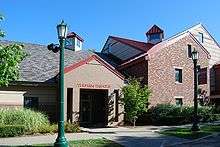
Yulman Theater
The Department of Music sponsors lectures, performances, recitals, and workshops by visiting artists at numerous campus venues, including the Taylor Music Center and Memorial Chapel. Union College jazz, choral and orchestral groups, a taiko ensemble, and three student a cappella groups perform regularly. The College's nationally recognized chamber music series, free to the Union community, offers world-renowned musicians in concert in acoustically superb Memorial Chapel.[156]
The Department of Theater and Dance offers several major theatrical productions as well as staged readings, student performances, guest appearances, and other shows throughout the school year.[157]
Athletics


Union offers an extensive program of intercollegiate sports, intramural sports, club, and recreational sports, along with several wellness programs. The College insists that athletics be kept in harmony with the essential educational purpose of Union. Its athletes, like those engaged in all extracurricular activities, must function effectively as students.[158]
Intercollegiate competition is offered in 25 sports; for men, in baseball, basketball, crew, cross-country, football, ice hockey, lacrosse, soccer, swimming, tennis, and indoor and outdoor track; and for women, in basketball, crew, cross-country, field hockey, ice hockey, lacrosse, soccer, softball, swimming, tennis, indoor and outdoor track, and volleyball. Originally a founding member of the New England Small College Athletic Conference (NESCAC), Union today participates in the National Collegiate Athletic Association (NCAA), the Liberty League, ECAC Hockey and the Eastern College Athletic Conference (ECAC). Men's and women's ice hockey compete at the NCAA Division I level; all other sports compete at the NCAA Division III level.[158]
All club sports are administered through the student activities office. The most active and popular clubs are baseball, bowling, fencing, golf, ice hockey, karate, rugby, skiing, and volleyball. An extensive intramural program is offered in a wide range of sports along with noncredit physical education classes as part of the wellness program.[158]
Facilities include the Frank L. Messa Rink at the Achilles Center, the David Breazzano Fitness Center, the Travis J. Clark Strength Training Facility, the David A. Viniar Athletic Center, and Frank Bailey Field.[158]
Union has hosted the two longest games in NCAA Men's Hockey History, losing both by identical 3-2 scores:
The longest game in NCAA hockey history was played on March 12, 2010. Quinnipiac University defeated Union College, 3-2, in the ECAC Hockey League Quarter-Finals after 90:22 of overtime. Greg Holt scored the winning goal just after 1:00 am local time.
The 2nd longest game in NCAA hockey history was played on March 5, 2006. Yale University defeated Union College, 3-2, in the ECAC Hockey League first-round playoff game after 81:35 of overtime. David Meckler scored the winning goal with Yale shorthanded.[159]
On April 12, 2014 the Union's Men's Hockey Team captured their first national championship title by defeating the University of Minnesota Golden Gophers, 7-4.
The Union football team went undefeated during the 1989 regular season, going 10-0. They lost to Dayton in the Amos Alonzo Stagg Bowl, 17-7.[160]
Alumni

Since 1797, the year of the first graduation, Union alumni have distinguished themselves in fields such as law, medicine, ministry, botany, geology, engineering, local, state, and federal government, literature and poetry, photography, military service, education, journalism, and architecture.
Among Union's 19th-century graduates were important figures in American secondary and post-secondary education. These included Gideon Hawley[161] (1809), the first superintendent of public instruction in New York State; Francis Wayland[162] (1813), president of Brown University; Henry Philip Tappan[163] (1825), president of the University of Michigan; Matthew Meigs[164] (1836), President of Delaware College (University of Delaware) (1850-1851), founder and principal of The Hill School in 1851, and U.S. Consul to Piraeus, Greece (1868-1869); Sheldon Jackson[165] (1855), who was the first superintendent of public instruction in Alaska and introduced the idea of domesticating reindeer as a food source for the native population; and Laurenus Clark Seelye (1857), the first president of Smith College.
Union has produced many graduates who had (and continue to have) distinguished careers in government and public service. John C. Spencer[166] (1806), Secretary of War and Secretary of the Treasury; William H. Seward[167] (1820), Secretary of State under Abraham Lincoln, Governor of New York, and architect of the Alaska Purchase from Russia; Chester A. Arthur[168] (1848), 21st President of the United States; Samuel R. Thayer (1860), United States Ambassador to the Netherlands during the Benjamin Harrison administration;[169] and Neil Abercrombie (1959), the former Governor of Hawaii, are some of the alumni in this sphere. In addition, Union had two alumni serve simultaneously as Secretary of State: while William H. Seward served as U.S. Secretary of State, Robert Toombs (Class of 1828) served as Secretary of State for the Confederate States of America. Jimmy Carter, the 39th President of the United States, studied Nuclear Physics at the Graduate School.
In 1845 Union established a course in civil engineering. Many of the graduates in this course went on to work on significant construction projects. In fact, it has been claimed that, for a time, the "designers and builders of the country's canals and railroads were overwhelmingly graduates of the military academy at West Point, Rensselaer Polytechnic Institute, and Union College…".[71] Among these early engineering graduates were James Chatham Duane[170] (1844) and Jacob Hays Linville[171] (1848). Solomon Deyo (1870) was the engineer in charge of constructing the first New York City Subway line.[172]
A number of alumni have made meaningful contributions to arts and letters: Joel T. Headley[173] (1839), author of numerous books about the Adirondack Mountains and early American history; William James Stillman[174] (1848), photographer and author; Fitz Hugh Ludlow[175] (1856), author of The Hashish Eater; Andrea Barrett (1974), winner of the National Book Award (for Ship Fever) and the Pulitzer Prize for works of fiction; and David Markson (1950), author of titles such as The Ballad of Dingus Magee.[176]
Other notable Union alumni include: Baruch Samuel Blumberg (1946)[177] winner of the Nobel Prize in Physiology or Medicine;Henry Wager Halleck (1837)[178][179] chief of staff for the Union Armies during the Civil War; William F. Fox [180] (1869) Superintendent of Forests at Adirondack Park; Howard Simons (1951),[181] managing editor of The Washington Post during the Watergate era; Nikki Stone (1995)[182] winner of a gold medal in the 1998 Winter Olympics for aerial skiing; Armand V. Feigenbaum (1942),[183] American businessman and developer of the concept of Total Quality Management (TQM); Major General Michael G. Dana (1982),[184] US Marine Corps; Andy Miller(1990),[185] former VP of Apple's mobile advertising iAd, Co-founder and ex-CEO of Quattro Wireless, co-owner of Sacramento Kings and former President and COO of Leap Motion; Richard K. Templeton (1980),[183] chairman, president and CEO of Texas Instruments; Alan F. Horn (1964),[183] the chairman of Walt Disney Studios, and former President and COO of Warner Bros.; Kate White (1972) [186] former editor-in-chief of Cosmopolitan Magazine; Robert "Bob" Moffat (1978)[187] senior executive at IBM arrested in 2009 for securities fraud and conspiracy; Jim Lippman (1979),[188] Chairman and CEO of JRK Property Holdings and the family who Lippman Hall is named after.
See also
Notes
a ^ Harvard University, The College of William and Mary, Yale University, Princeton University, Columbia University, University of Pennsylvania, Brown University, Rutgers University, and Dartmouth College.[10]
b ^ Washington College, Washington and Lee University, Hampden–Sydney College, Transylvania University, Dickinson College, St. John's College, University of Georgia, College of Charleston, Franklin & Marshall College, University of Vermont, Williams College, Bowdoin College, Tusculum College, University of Tennessee, University of North Carolina (Chapel Hill) and Union College.[189]
References
- ↑ "U.S. and Canadian Institutions Listed by Fiscal Year (FY) 2017 Endowment Market Value and Change in Endowment Market Value from FY 2016 to FY 2017" (PDF). National Association of College and University Business Officers and Commonfund Institute. 2017. Archived from the original on 2017-02-15.
- ↑ http://www.union.edu/Resources/Campus/institutional_studies/CDS/2009-10/cds-b-enrollment-and-persistence.pdf
- ↑ "Union College Common Data Set 2014-2015" (PDF). Union College.
- ↑ "Colors - Communications - Union College". Retrieved September 26, 2014.
- ↑ center, member. "Member Center". Archived from the original on 9 November 2015. Retrieved 7 December 2016.
- 1 2 Somers (2003), p. 304
- 1 2 "The Little Ivies' Endowments Took a Big Hit This Year". Bloomberg.com. 2016-12-22. Retrieved 2017-02-23.
- ↑ "Union College Office of Institutional Studies". 2008. Retrieved 2009-09-21.
- ↑ Fortenbaugh (1978), p. 3
- 1 2 Tewksbury (1932), p. 59
- ↑ A History of Columbia University, 1754–1904. New York: Columbia University Press. 1902. p. 1.
- ↑ Fox (1945), p. 10
- ↑ Rudolph (1965), p. 34
- ↑ Boorstin (1965), p. 153
- 1 2 Somers (2003), p. 296
- ↑ Pearson (1880/1980), p. 119
- ↑ Fortenbaugh (1978), p. 36
- ↑ Neisular (1964), p. 20
- ↑ Somers (2003), p. 629
- ↑ Hough (1885), p. 146
- ↑ Raymond (1907), p. 1:34
- ↑ Yates (1902), p. 423
- ↑ Raymond (1907), p. 1:38
- ↑ Fortenbaugh (1978), p. 74
- ↑ Fortenbaugh (1978), p. 73
- ↑ "Union's age-old motto gets a modern makeover". Retrieved 23 July 2018.
- 1 2 Somers (2003), p. 636; See also Fortenbaugh, passim.
- ↑ Altheim (1938), p. 265
- ↑ Smith (1867), p. 1:1090
- ↑ Fowler (1911), p. 234
- ↑ King (1750), p. 123
- ↑ Hahn (1971), p. 4
- ↑ Memoirs of the American Academy of Arts and Sciences. Boston: Adams and Nourse. 1785. p. 1:638.
- ↑ Somers (2003), p. 637
- ↑ Locke (1764), p. 2
- ↑ Yates (1902), p. 428
- ↑ Somers (2003), p. 510
- ↑ Dictionary of American Biography (DAB). New York: Scribner. p. 7:299.
- ↑ DAB, 6:37
- ↑ DAB, 12:433
- ↑ DAB, 13:580
- ↑ DAB, 9:5
- ↑ DAB, 1:126
- ↑ DAB, 15:126
- ↑ Raymond (1907), p. 1:374
- ↑ Raymond (1907), p. 1:387
- ↑ Somers (2003), p. 599
- ↑ Somers (2003), p. 609
- ↑ Somers (2003), p. 221
- ↑ American National Biography (ANB). New York: Oxford University Press. p. 8:336.
- ↑ Somers (2003), p. 215
- ↑ Somers (2003), p. 472
- ↑ Somers (2003), p. 115
- ↑ Somers (2003), p. 493
- ↑ "Roger H. Hull: Seventeenth president of Union College, September 1, 1990–June 30, 2005". Union College. Retrieved 2010-09-30.
- ↑ "James Underwood named interim president of Union College, May 27, 2005". Union College. Retrieved 2018-08-27.
- ↑ "Stephen Charles Ainlay: Eighteenth president of Union College, July 1, 2006". Union College. 2006-07-01. Retrieved 2010-09-30.
- ↑ "David R. Harris". Union College. Retrieved 2018-02-20.
- ↑ Schmidt (1957), p. 52, 54
- ↑ The Laws of Yale College. New Haven: The Journal Office. 1825. p. 16. ; Laws of Union College. Schenectady: Isaac Riggs. 1821. p. 25. ; Catalogue of the Officers and Students of the College of New Jersey. Trenton: George Sherman. 1830. p. 10.
- ↑ Rudolph (1965), p. 113
- ↑ Rudolph (1977), p. 51
- ↑ Butts (1939), p. 129
- ↑ Rudolph (1965), p. 114
- ↑ Hislop (1971), p. 582n23
- ↑ Adams (1827), p. 32
- ↑ Butts (1939), p. 135
- ↑ Rudolph (1977), p. 62
- ↑ Sherwood (1900), pp. 484, 492
- ↑ Hough (1885), p. 160
- 1 2 Rudolph (1977), p. 63
- ↑ Guralnick (1975), p. 38
- ↑ Somers (2003), p. 630
- ↑ Hough (1885), p. 154
- ↑ Hough (1885), p. 155n
- ↑ Somers (2003), p. 789
- ↑ Hislop (1971), p. 139
- ↑ Raymond (1907), p. 145, 147
- ↑ Raymond (1907), p. 140
- ↑ Sherwood (1900), p. 205
- ↑ Sherwood (1900), p. 206
- ↑ Somers (2003), p. 136
- ↑ Somers (2003), p. 135
- ↑ Raymond (1907), p. 1:147
- 1 2 Turner (1984), p. 68
- 1 2 Turner (1996), p. 189
- ↑ Tunnard (1964), p. 7
- ↑ Turner (1996), p. 182
- 1 2 3 Tunnard (1964), p. 10
- 1 2 Turner (1996), p. 190
- ↑ Turner (1996), p. 214
- ↑ Wills (2002), p. 49
- ↑ Somers (2003), p. 598
- ↑ Turner (1996), p. 216
- ↑ Turner (1984), p. 71
- ↑ Somers (2003), p. 59
- ↑ Somers (2003), p. 28
- ↑ Somers (2003), p. 360
- ↑ Somers (2003), p. 411
- ↑ "Lippman Hall". Union College. Retrieved 15 March 2015.
- ↑ Somers (2003), p. 486
- ↑ Somers (2003), p. 505
- ↑ National Park Service (2007-01-23). "National Register Information System". National Register of Historic Places. National Park Service.
- ↑ "Nott Memorial Hall". National Historic Landmark summary listing. National Park Service. 2007-09-17. Archived from the original on 2011-06-06.
- ↑ Somers (2003), p. 518
- ↑ Somers (2003), p. 331
- ↑ Somers (2003), p. 141
- ↑ Somers (2003), p. 627
- ↑ Somers (2003), p. 786
- ↑ Somers (2003), p. 745
- ↑ "Union College, Board of Trustees". Retrieved 2010-09-30.
- ↑ Union College Organization Chart, Sept. 2008
- ↑ "Union College Faculty Manual". Retrieved 2009-11-13.
- ↑ "Union College Student Forum". Retrieved 2009-11-13.
- ↑ "Union and other colleges form New York Six Consortium". Retrieved 2009-11-13.
- ↑ "Union University". Retrieved 2009-11-13.
- ↑ Somers (2003), p. 593
- ↑ Somers (2003), p. 594
- ↑ Somers (2003), p. 184
- ↑ "About Union: The Mission of the College". Union College. 2008-05-31. Retrieved 2010-09-30.
- ↑ Union College Academic Register, 2008–2009. Union College. pp. 4–7.
- ↑ "First-Year Preceptorial". Retrieved 2009-08-28.
- ↑ "Sophomore Research Seminar". Retrieved 2009-08-28.
- ↑ Union College Academic Register, 2008–2009. Union College. p. 3.
- 1 2 3 4 "Union College Common Data Set 2014-2015" (PDF). Union College.
- ↑ "Undergraduate Research". Union College. Retrieved 2009-08-31.
- ↑ "International Programs - Union College". Retrieved 7 December 2016.
- ↑ "Union College, International Programs: Terms Abroad". Retrieved 2010-09-30.
- ↑ "Union College, International Programs: Mini-Terms". Retrieved 2010-09-30.
- ↑ "Union College, International Programs: Engineering". Retrieved 2010-09-30.
- ↑ Dibbell, Jeremy B. (2008). ""A Library of the Most Celebrated & Approved Authors": The First Purchase Collection of Union College". Libraries & the Cultural Record. 43 (4). pp. 367–396. doi:10.1353/lac.0.0046.
- ↑ "Connect NY". Retrieved 2009-12-21.
- ↑ "Audubon Collection". Union College Schaeffer Library. Retrieved 2 April 2016.
- ↑ "Union College Office of Institutional Studies". 2009. Retrieved 2009-12-15.
- ↑ "America's Top Colleges". Forbes. July 5, 2016.
- ↑ "Best Colleges 2017: National Liberal Arts Colleges Rankings". U.S. News & World Report. September 12, 2016.
- ↑ "2016 Rankings - National Universities - Liberal Arts". Washington Monthly. Retrieved September 6, 2016.
- ↑ "History of the Sigma Phi - Sigma Phi Society". Retrieved 7 December 2016.
- ↑ Somers (2003), p. 305
- ↑ "Union College Fraternity and Sorority Life: Interfraternity Council". October 6, 2015.
- ↑ Rand, Frank Prentice; Ralph Watts; James E. Sefton (1993), All The Phi Sigs - A History, Grand Chapter of Phi Sigma Kappa
- ↑ "Union College Fraternity and Sorority Life: Panhellenic Council". August 16, 2016.
- ↑ "Union College Fraternity and Sorority Life: Multicultural Greek Council". April 5, 2016.
- ↑ Farrell, Elizabeth (24 February 2006). "Putting Fraternities in Their Place". The Chronicle of Higher Education. Retrieved 2009-09-14.
- 1 2 "Union College, Student Life: Minerva Programs". Retrieved 2009-09-22.
- 1 2 "Union College, Student Life: Theme Houses". Retrieved 2009-09-02.
- ↑ "NYS Education Law, Article 129A, Section 6435". Justia. Retrieved 2016-04-14.
- ↑ "Union College 2014 Clery Act Statistics" (PDF). union.edu. Union College. Retrieved 2016-04-14.
- ↑ "Campus Safety Department - Union College". www.union.edu. Retrieved 2016-04-14.
- ↑ "Union College Emergency Medical Services". National Collegiate Emergency Medical Services Foundation. Retrieved 2016-04-14.
- ↑ "List of EMS Agencies by County" (PDF). NYS Dept. of Health- Bureau of EMS. 2012. Retrieved 2016-04-14.
- ↑ "Schaffer Library".
- ↑ "About the Art Installation Series - Mandeville Gallery". muse.union.edu.
- ↑ "Union College: Mandeville Gallery". Retrieved 2009-09-02.
- ↑ "Union College Permanent Collection". Retrieved 2009-09-02.
- ↑ "Union College: Music". Retrieved 2009-09-02.
- ↑ "Union College: Theater & Dance". Retrieved 2009-09-02.
- 1 2 3 4 "Union College Athletics". Retrieved 2009-09-14.
- ↑ "Where Hockey's More Than Another Tradition". ECAC Hockey. Retrieved 2 April 2016.
- ↑ MacAdam, Mike (December 11, 1989). "Dayton Defeats Union, Claims NCAA Title, 17-7". Schenectady (N.Y.) Gazette. Gazette Newspapers. Retrieved November 26, 2016 – via Google News Archive.
- ↑ Dictionary of American Biography (DAB). New York: Scribner. p. 8:418.
- ↑ DAB, 19:560
- ↑ DAB, 18:302
- ↑ cite journal|title=Information on Matthew Kughler Meigs|journal=University of Delaware Archives|issue=Information Sheet 12
- ↑ DAB, 9:555
- ↑ DAB, 17:449
- ↑ DAB, 16:615
- ↑ DAB, 1:373
- ↑ John William Leonard, Albert Nelson Marquis, Who's Who in America, Volume 3, 1903, page 1469
- ↑ DAB, 5:466
- ↑ Katte, Walter (1907). "Memoir of Jacob Hays Linville". Proceedings of the American Society of Civil Engineers. 33, pt. 2: 744–750.
- ↑ "Died: Solomon Levevre Deyo". New York Times. August 21, 1922. p. 7.
- ↑ DAB, 8:479
- ↑ DAB, 18:29
- ↑ DAB, 11:491
- ↑ "David Markson dies at 82; postmodern writer". Los Angeles Times. June 8, 2010. Retrieved 2 April 2016.
- ↑ "Baruch Blumberg '46, winner of Nobel Prize, dies". Union College. Retrieved 2 April 2016.
- ↑ DAB, 8:150
- ↑ "Union College and the Lincoln Assassination". Union College Magazine. June 1, 2015. Retrieved 2 April 2016.
- ↑ Alfred Lee Donaldson (1921). A History of the Adirondacks. Century Company. p. 228.
- ↑ "Howard Simons Class of 1951". Union College - Schaeffer Library Collectios. Retrieved 2 April 2016.
- ↑ "Nikki Stone Class of 1995". Union College Schaeffer Library Collection. Retrieved 2 April 2016.
- 1 2 3 "Union College Notables Archive". Union College Schaeffer Library. Retrieved 2 April 2016.
- ↑ "Marine Corps Biographies: Major General Michael G. Dana". Semper Fi Parents. Retrieved 2 April 2016.
- ↑ "Meet Apple's Mobile Advertising Boss, Andy Miller". Business Insider. Retrieved 2 April 2016.
- ↑ "The Double Life of Kate White". Union College. Retrieved 2 April 2016.
- ↑ Bandler, James (June 6, 2010). "Dangerous liaisons at IBM: Inside the biggest hedge fund insider-trading ring". Fortune. Retrieved 2 April 2016.
- ↑ "College to dedicate Lippman Hall during Homecoming and Family Weekend". Union College. October 21, 2011. Retrieved 2 April 2016.
- ↑ Tewksbury (1932), p. 60
Bibliography
- ANB: American National Biography. New York: Oxford University Press. 1999. OCLC 39182280.
- Boorstin, Daniel J. (1965). The Americans: The National Experience. New York: Random House. ISBN 0-517-16415-9. OCLC 360759.
- Butts, R. Freeman (1939). The College Charts Its Course. New York: McGraw-Hill. ISBN 0-405-03699-X. OCLC 603810.
- DAB: Dictionary of American Biography. New York: Scribner. 1928. OCLC 4171403.
- Demarest, William H. S. (1924). A History of Rutgers College, 1766–1924. New Brunswick: Rutgers College. OCLC 785305.
- Ferm, Robert L. (1976). Jonathan Edwards the Younger. Grand Rapids: Eerdmans. ISBN 0-8028-3485-X.
- Fortenbaugh, Jr., Samuel B. (1978). In Order to Form a More Perfect Union: An Inquiry into the Origins of a College. Schenectady: Union College Press. ISBN 0-912756-06-3.
- Fox, Dixon Ryan (1945). Union College: An Unfinished History. Schenectady, New York: Union College. OCLC 4676869.
- Guralnick, Stanley M. (1975). Science and the Ante-Bellum College. Philadelphia: American Philosophical Society. ISBN 0-87169-109-4.
- Hislop, Codman (1971). Eliphalet Nott. Middletown, Connecticut: Wesleyan University Press. ISBN 0-8195-4037-4.
- Hough, Franklin B. (1885). Historical and Statistical Record of the University of the State of New York. Albany: Weed, Parsons. OCLC 473881227. (Full text via Google Books.)
- Neisular, Jeanette G. (1964). The History of Education in Schenectady. Schenectady: Schenectady Board of Education. OCLC 18477246.
- Pearson, Jonathan (1880/1980). Three Centuries: The History of the First Reformed Church of Schenectady, 1680–1980. Schenectady: The First Reformed Church of Schenectady. OCLC 483709158. Check date values in:
|year=(help) - Randall, Henry S. (1858). The Life of Thomas Jefferson. New York: Derby and Jackson. ISBN 0-8050-1577-9. OCLC 933758. (Full text via Google Books.)
- Raymond, Andrew Van Vranken (1907). Union University. New York: Lewis Publishing Company. ISBN 0-9519312-2-9. OCLC 11901093. (Full text via Google Books.)
- Rudolph, Frederick (1965). The American College and University. New York: Alfred Knopf. ISBN 0-201-14835-8. OCLC 176662.
- Rudolph, Frederick (1977). Curriculum: A History of the American Undergraduate Course of Study Since 1636. San Francisco: Josey-Bass. ISBN 0-87589-358-9.
- Schmidt, George P. (1957). The Liberal Arts College. New Brunswick: Rutgers University Press. ISBN 0-534-93501-X. OCLC 254359957.
- Sherwood, Sidney (1900). The University of the State of New York: History of Higher Education in the State of New York. Washington, D.C.: Government Printing Office. OCLC 3123002. (Full text via Google Books.)
- Somers, Wayne, ed. (2003). Encyclopedia of Union College History. Schenectady, New York: Union College. ISBN 0-912756-31-4.
- Tewksbury, Donald G. (1932). The Founding of American Colleges and Universities Before the Civil War. New York: Teachers College, Columbia University. OCLC 76620.
- Tunnard, Christopher (1964). Joseph Jacques Ramée: Architect of Union College. Schenectady, New York: Union College. OCLC 5291278.
- Turner, Paul V. (1984). Campus: An American Planning Tradition. Cambridge, Massachusetts: MIT Press. ISBN 0-262-20047-3.
- Turner, Paul V. (1996). Joseph Ramée: International Architect of the Revolutionary Era. Cambridge: Cambridge University Press. ISBN 0-521-49552-0.
- Wills, Garry (2002). Mr. Jefferson's University. Washington, D.C.: National Geographic Society. ISBN 0-7922-6531-9. OCLC 97814677.
- Yates, Austin A. (1902). Schenectady County, New York: Its History to the Close of the Nineteenth Century. New York: New York History Company. ISBN 1-153-14534-0. OCLC 18738526.
Further reading
- Hough, Franklin B. (1876). Historical Sketch of Union College. Washington, D.C.: Government Printing Office. OCLC 61597023. (Full text via Google Books.)
- Huntley, C. William (1985). Thirty Years in the Life of a College. Schenectady, New York: Union College. OCLC 15201599.
- Larrabee, Harold A. (1934). Joseph Jacques Ramée and America's First Unified College Plan. New York: American Society of the French Legion of Honor. OCLC 29132611.
- Van Santvoord, Cornelius (1876). Memoirs of Eliphalet Nott, for Sixty-Two Years President of Union College. New York: Sheldon. OCLC 3325463. (Full text via Google Books.)
- Waldron, Charles (1954). The Union College I Remember, 1902–1946. Boston: privately printed. OCLC 916746.
External links
| Wikimedia Commons has media related to Union College. |
- Official website

- Concordiensis archives (1887-2000) | NY State Historic Newspapers
Coordinates: 42°49′02″N 73°55′48″W / 42.81722°N 73.93000°W
